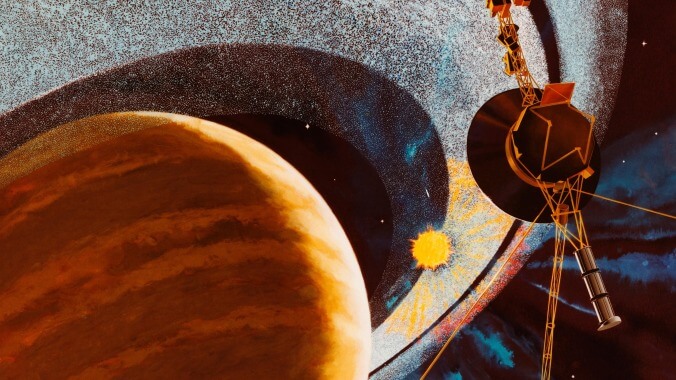We can relate to Saturn’s big ol’ jiggly middle section
New evidence suggests the exoplanet might have an “oscillating” core of ice, rock, and gas

We’ve really let ourselves go during the pandemic, but apparently we aren’t alone. Researchers at Caltech recently published a new study of the sixth planet in our solar system presenting substantial evidence that our ringed neighbor’s center isn’t as rock solid as many assumed, but is instead a “‘fuzzy’ core that jiggles around” composed of ice, rock, and gas. “This diffuse core extends out to about 60% of Saturn’s radius—a huge leap from the 10 to 20% of a planet’s radius that a traditional core would occupy,” explains Technology Review’s write-up earlier this week. We believe the feeling we are currently experiencing is what many youth of today would call “seen.”
Caltech astronomers believe Saturn is all soft and wiggly ‘round the middle because its rocky ice materials are hydrogen soluble, which in turn permits the planet’s core to act more as a fluid than as a more conventional solid. The team’s new model “suggests that Saturn’s diffuse core contains rocks and ice adding up to more than 17 times the mass of the entire Earth.”
If Saturn didn’t have a rough enough go of it already, the planet’s also apparently always off-kilter. The new theory raised by Caltech explains that “as the core wobbles, it creates gravitational perturbations that affect the surrounding rings, creating subtle ‘waves’ that can be measured.”
There are apparently a lot of implications from the new model, which are a bit too technical to delve into here, but suffice to say our solar system’s sixth planet is one big, beefy, off-balance boy. Not that anyone is judging it—scientists hope NASA’s forthcoming Juno mission to Jupiter could reveal similar planetary revelations, which we are sure would make Saturn feel much less self-conscious about itself. And maybe ourselves.
Send Great Job, Internet tips to [email protected]